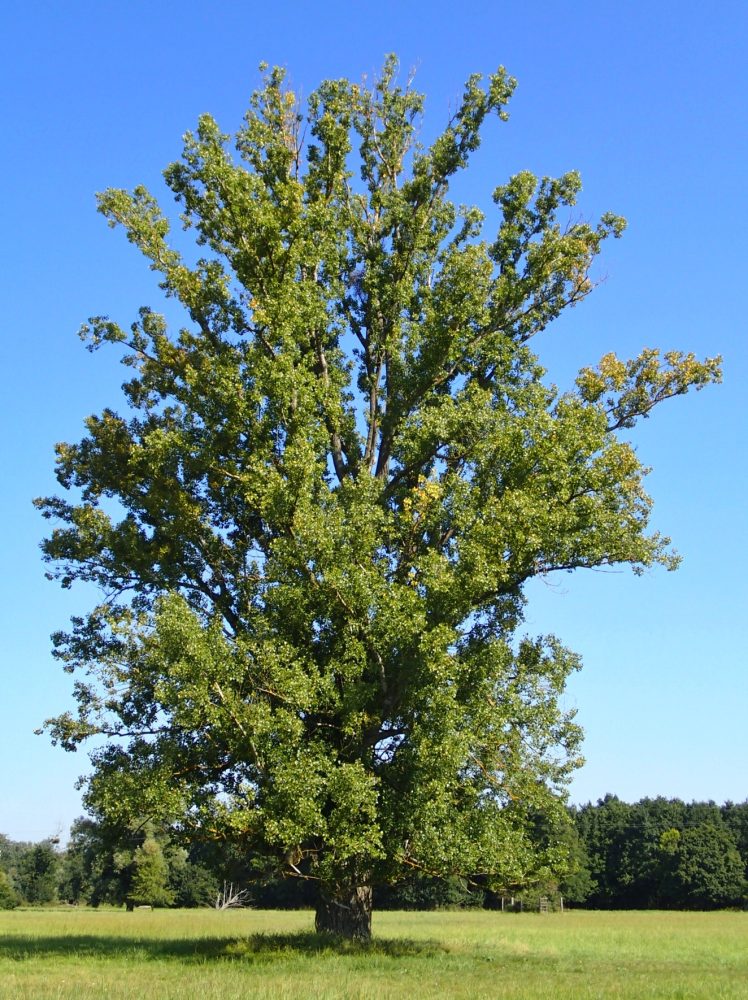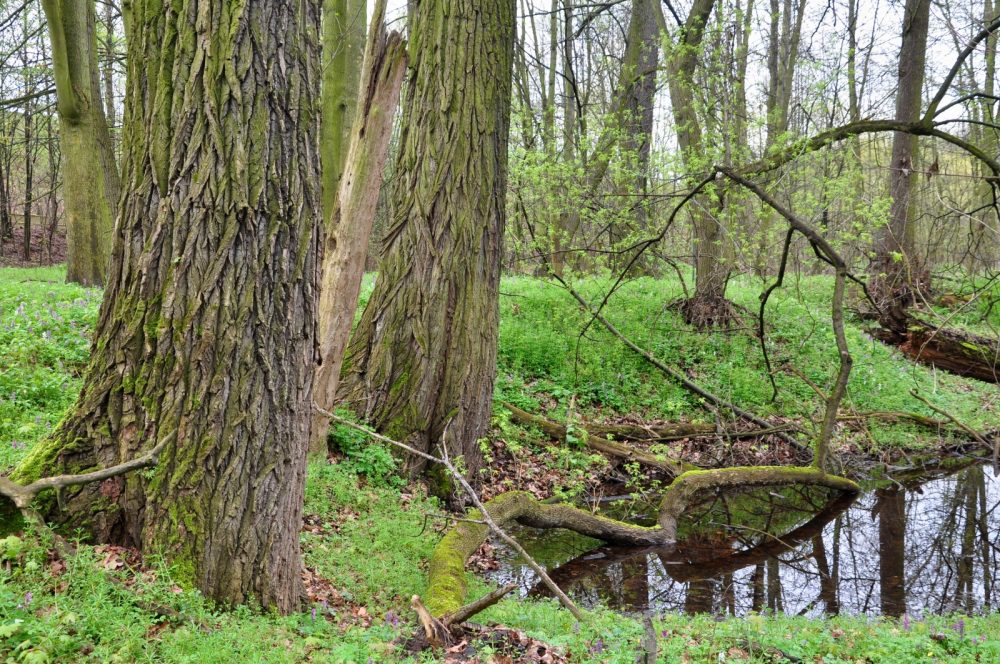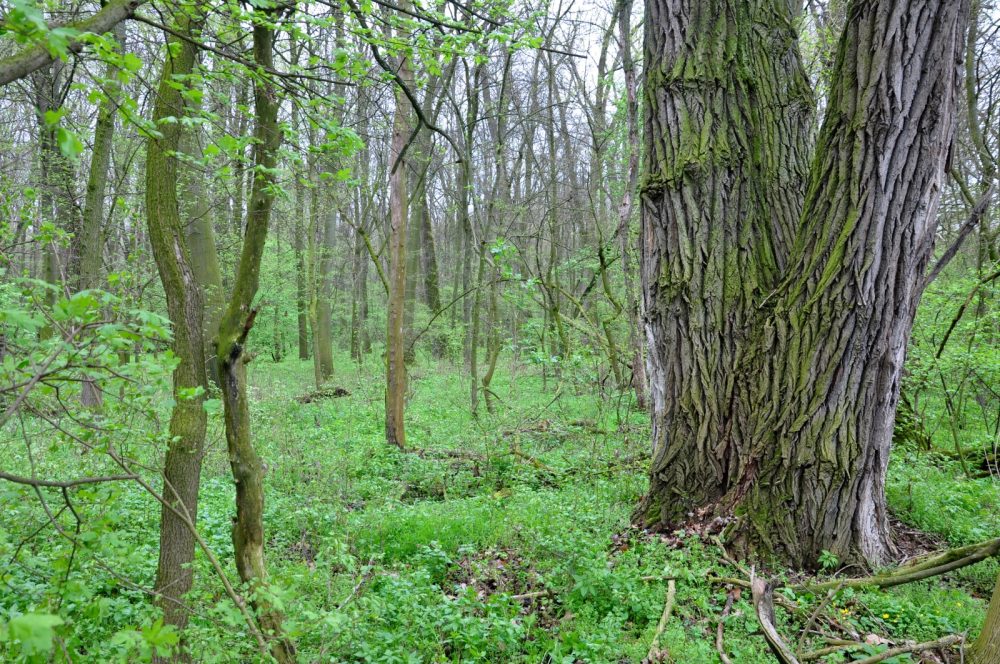Return of the black poplar to floodplain forests
 In recent years, as a result of extreme weather fluctuations and long-term periods of drought, floodplain forests have been destroyed and ash and alder tree species die off due to the action of fungal pathogens. In order to maintain the ecological stability of the landscape, preserve the vegetation cover, water quality, limit the degradation and erosion of the forest soil, and mitigate the decline in wood production, scientists are verifying effective forest restoration procedures using suitable alternative tree species, including the black poplar, native in our country.
In recent years, as a result of extreme weather fluctuations and long-term periods of drought, floodplain forests have been destroyed and ash and alder tree species die off due to the action of fungal pathogens. In order to maintain the ecological stability of the landscape, preserve the vegetation cover, water quality, limit the degradation and erosion of the forest soil, and mitigate the decline in wood production, scientists are verifying effective forest restoration procedures using suitable alternative tree species, including the black poplar, native in our country.
In the past, the black poplar was strongly reduced by human activities and this tree species has been considered an endangered since the middle of the 20th century. Black poplar is included in the category of critically endangered species in the Red List of endangered plant species of the Czech Republic. The preservation of the endangered black poplar gene pool is also being addressed within the framework of international cooperation (EUFORGEN, IUFRO).
The black poplar is a big tree species 30–40 m high, with the d 1,3 diameter (DBH) of 1–2 m, at its significant root shoots form. Its higher vitality is contributed by the fact that this tree species creates both deep roots that follow the groundwater, as well as widely spread roots close to the soil surface, exceeding the circumference of the crown.
The black poplar is characterized by a high regenerative capacity both on the stem and on the stump, and it can be easily propagated by cuttings. It is a dioecious tree with drooping female or male catkins. The initially high germination rate of a large number of downy seeds is decreasing rapidly. Black poplar requires enough light and it is not tolerant against shade, even nor at a young age.
Black poplar is a native species in the Czech Republic with a predominant presence in floodplain forests near large rivers and their tributaries. In the natural habitats of this tree species, only remnant stands or only individuals have been preserved in locations in central Polabí, Poohří, in the Moravian valleys, in the Odra, Ostravice and Morávka catchments.
Black poplar wood was used in carpentry, cooperage, carving, and for fuel. This tree species has a significant application in the planting of rows of trees creating protective belts and as a landscape-forming element. In the past, it was greatly reduced by human activity and replaced by more economically attractive tree species and more productive Canadian poplar cultivars.
In their research, scientists from VÚLHM focused on the possibility of the return of black poplar to our forests. One of the outputs of their research is the certified methodology Methodical procedures for characterization of genetic diversity in black poplar (Populus nigra) using microsatellite markers (Metodické postupy charakterizace genetické diverzity u topolu černého s využitím mikrosatelitových markerů).
Description of the methodological procedures of DNA analyses using microsatellite markers for the verification of genetic variability in black poplar has not yet been published, for the conditions of the Czech Republic.
 Markers were selected based on the values of their genetic characteristics obtained after analyses performed on a set of 239 black poplars from Moravian and Czech localities.
Markers were selected based on the values of their genetic characteristics obtained after analyses performed on a set of 239 black poplars from Moravian and Czech localities.
For the preservation and reproduction of species, it is essential to represent the widest possible spectrum of genotypes, where the occurrence of genes with the potential to adapt to changes and fluctuations in living conditions can also be assumed. Obtaining sufficiently genetically variable offspring is important for the adaptability of future stands in changing environmental conditions.
For the re-expansion of poplars and their use in forest and landscape restoration, it is necessary to obtain quality sources of reproductive material. Therefore, scientists in the field search for phenotypically high-quality trees based on morphological features, and their genetic characteristics are determined using DNA analyses.
Determining the genetic structure of the selected trees is important to propose them to be certified as the sources of reproductive material and to exclude closely related, especially identical genotypes that may arise due to the very good root sprouting capacity of the black poplar.
The preservation and re-expansion of this forestry-neglected autochthonous species of black poplar is currently important in connection with the mass die-off of economically important trees in lower elevations, such as ash and alder, as a result of adverse climate changes and damage by fungal pathogens.
The black poplar is naturally found in the river catchments of the lowest geographical locations. This tree species is a suitable part of the tree species composition for the rapid reforestation of large areas in the area of floodplain forests, due to its pioneering nature of growth.
Poplars contribute to forest regeneration as preparatory tree species with amelioration function and these species can partially replace wood production. The wood of the fast-growing black poplar is considered the most valuable of the poplar species, it is very light, soft, not very flexible and quite durable. High-quality logs can be used for the production of veneers, especially for the furniture industry. Other parts of the tree can also be used, for example the bark as a substitute for cork.
 When silviculture of preparatory stands, it can be assumed that stands with higher genetic variability will better withstand adverse environmental conditions, which have worsened in recent years due to sharp weather fluctuations and long periods of drought in most habitats.
When silviculture of preparatory stands, it can be assumed that stands with higher genetic variability will better withstand adverse environmental conditions, which have worsened in recent years due to sharp weather fluctuations and long periods of drought in most habitats.
The use of methodical procedures for growing genetically proven variable, and therefore more adaptable stands of black poplar contributes to ensuring the ecological stability of the landscape, to maintaining the tree layer during the restoration of floodplain forests, to protection against forest soil erosion and to the creation of protective belts.
Knowledge about the diversity of populations also helps to fulfil the goals of the State Environmental Policy of the Czech Republic, the Biodiversity Protection Strategy of the Czech Republic 2016–2025, the State Program for the Protection of Nature and Landscape of the Czech Republic for the period 2020–2025 and the international obligations of the Czech Republic in the protection of biological diversity.
The methodology was created during the solution of research project NAZV No. QK1810258 „Návrh alternativní druhové skladby dřevin pro lesní ekosystémy se sníženou ekologickou stabilitou v důsledku fyziologického sucha“ (Proposal of alternative tree species composition for forest ecosystems with reduced ecological stability due to physiological dryness).
The methodology „Methodical procedures for characterization of genetic diversity in black poplar (Populus nigra) using microsatellite markers“ (Metodické postupy charakterizace genetické diverzity u topolu černého s využitím mikrosatelitových markerů) can be downloaded here.
Authors of methodology: Ing. Helena Cvrčková, Ph.D., Ing. Luďka Čížková, Ph.D., Ing. Pavlína Máchová, Ph.D., Bc. Kateřina Vítová, VÚLHM, v. v. i., e-mail: cvrckova@vulhm.cz
Prepared by Ing. Jan Řezáč; e-mail: rezac@vulhm.cz
Illustration photos: Black poplar in the Czech Republic floodplain forests
